
SPORTING CARSON ROAD AND TRACK.
SPORTING CARS ON ROAD AND TRACK. THE SIX-CYLINDER MATHIS. ABRIDGED SPECIFICATION. Engine : Six cylinder O.H.V. and camshaft. 6o mm. 70 mm. (1187.5 c.c.) Clutch: Plate type. Gear Box :…
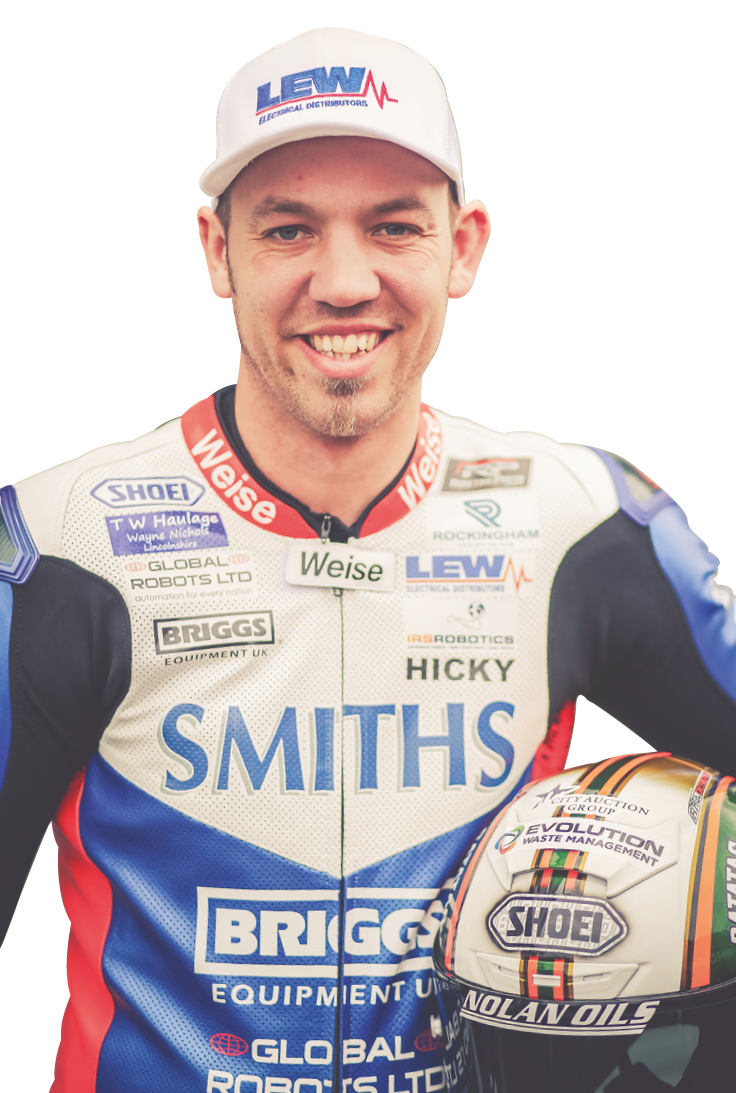
Not long after Peter Hickman won last year’s Senior TT on the Isle of Man he commentated over onboard footage of his sixth and final lap, during which he raised the outright lap record to 135.45mph in his successful pursuit of arch-rival Dean Harrison.
Hickman took 16 minutes and 42 seconds to complete the 37.75-mile lap aboard his Smiths Racing BMW S1000RR superbike, a pimped-up road bike that nudges 200mph on the straightest sections of the Mountain course. This layout was first used in 1911, when nascent motorcycles required pedal assistance to climb the steeper inclines.
The film is the usual beyond-belief onboard TT lap: Hickman rocking on at frankly ridiculous speeds that your brain cannot quite compute. Surely, the video is on fast-forward? No, it isn’t.
Most of the course is ridden between 150 and 190mph, the sense of speed accentuated by the narrow country roads bordered by houses, trees, drystone walls and hedges.
This cannot be normal, but for a top TT rider it is exactly that – 20 riders have now lapped the course at over 130mph. However, there is something different about Hickman’s Senior-winning lap. He’s on full throttle, wringing the BMW’s neck, its engine making a hellish 13,000rpm din; then at some corners the revs rise wildly. The bike is breaking traction and spinning its rear tyre. Hickman is obviously overdoing it, on the verge of losing control. But in fact, he’s not. He is purposely creating the wheelspin with his right wrist to make the bike oversteer, so he can get through corners faster.
Every few years someone raises the level at the TT by finding new ways of attacking the course, often using risky techniques perfected on short circuits, where errors aren’t so costly. Motorcycle racers have been using the rear wheel to steer through corners since ‘King’ Kenny Roberts applied his dirt-track skills to asphalt in the 1970s; but this was at venues blessed with haybales and gravel run-off. Using wheelspin to create oversteer to make the difference through ultra-fast corners on the Isle of Man’s unforgiving roads is something new. Hickman may not be the only rider doing this, but he does it better than anyone else.
“I use wheelspin to turn the bike,” says the 31-year-old, who contested his first TT in 2014 and won his first two races last June. “I do it through a lot of the fourth-, fifth- and sixth-gear corners. At the end of the Mountain Mile there’s a right kink which I go through absolutely flat-chat in top gear and I couldn’t make that corner if I didn’t slide the rear. I’d just go straight, because at that speed the bike doesn’t want to turn.
“It’s the same at Gorse Lea, one of my favourite [and one of the TT’s most daunting] corners, I’m using wheelspin through there in fifth. Another one is through Crosby village at DJ’s [where nine-times winner David Jefferies lost his life during the 2003 TT]. I do that flat in top gear, over 180mph, I don’t even roll off a little bit and you can feel the whole bike slide and you can hear the tyre spin up on the exit. Again, you need the spin to make the corner. It’s okay – I’m used to it, I plan to do it. I’m in control, and even when I get a slide I hadn’t planned I’ve predicted it might happen, so I’m ready for it if it does happen.
“I use zero electronics – no traction control, no anti-wheelie – because we’re not allowed any of that in British Superbikes and I want the bike to feel the same. BMW don’t really like it – they say you need the electronics for safety!”
Hickman is accustomed to people questioning his sanity for racing a motorcycle down country lanes at close to the double ton. “I get called crazy a lot, but I don’t think I’m crazy, but that’s what makes crazy people crazy – they don’t know they’re crazy!” he laughs. “I don’t think I’m mad. To me, the TT is just a calculated risk.
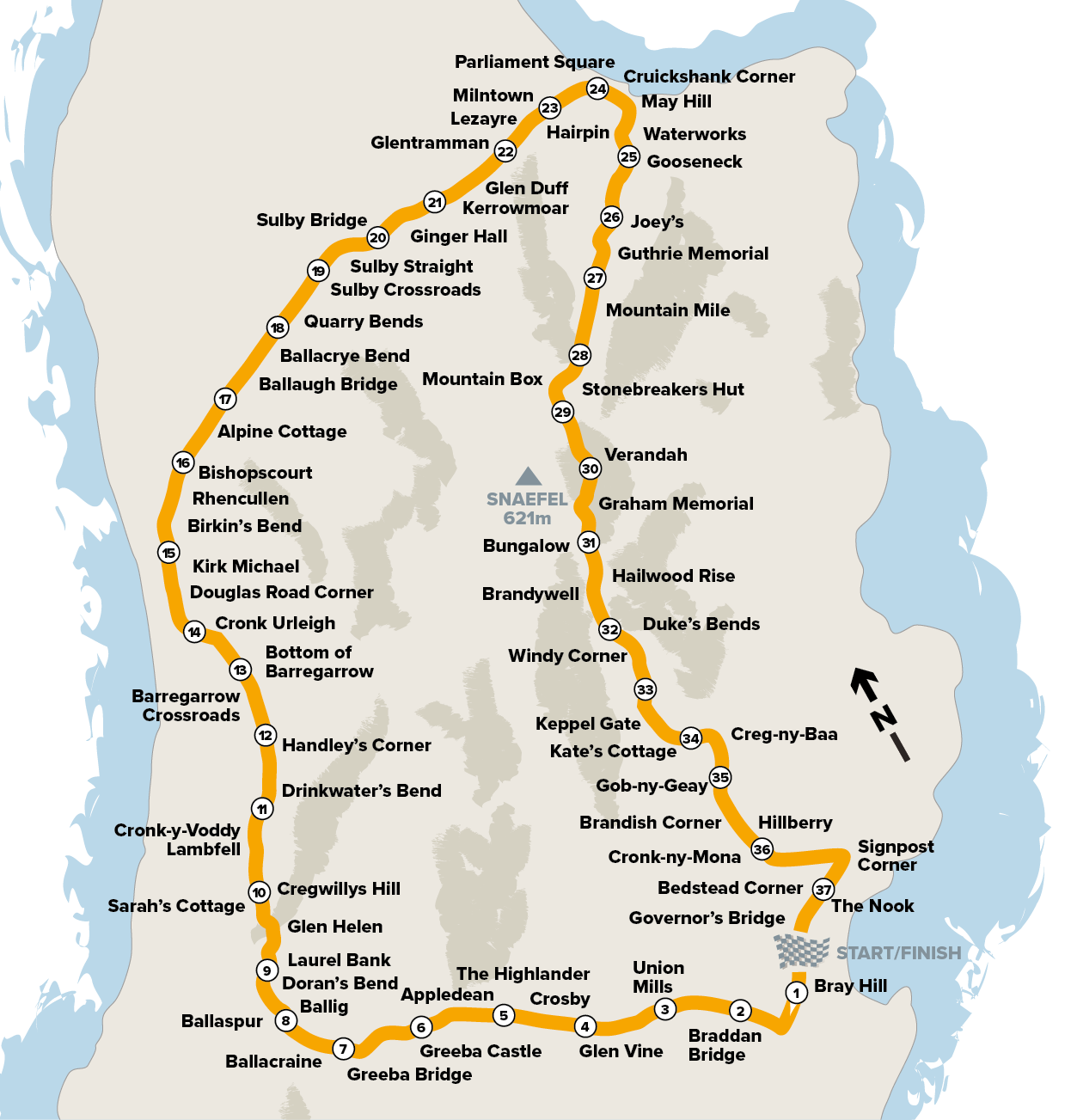
“When you line up at the start on Glencrutchery Road you know what you’re putting yourself in for – there’s massive consequences if you make a mistake. Whereas when I’m at Brands or some other BSB round I want to rip everyone’s heads off and let them have it. At BSB you almost throw caution to the wind, whereas when you’re racing on the roads you need more presence. A gung-ho approach doesn’t work, you’ve got to calculate. I’m a very calculating person, but I don’t overthink things either. I’m very relaxed, so I guess that kind of demeanour helps, especially at the TT. If it’s all good, I’m happy to push; if it’s not, I’ll just go, ‘you know what, it’s not right’. I like to build up to speed and I’m generally very smooth and very accurate. I can’t make myself go fast when things don’t feel right.”

Most TT riders have parts of the course they love and parts they hate or fear. But not Hickman: “My favourite bit starts at the start line and finishes at the finish line. It’s such a diverse course; there’s nothing like it in the world. It’s got fast bits, slow bits, very technical sections and some easier sections. There are places where the trees enclose the track completely so it’s quite dark, also narrow and bumpy, then there are some really open parts, where it’s quite wide and smooth. It’s got everything you can think of, which is the one thing that makes it special above everything else. When I’m in the zone I’m completely at one with the bike and the circuit; there’s nothing else in the world.
“There are some bits that I really look forward to and there are a few where I’m a bit kind of, urgh. I always enjoy Kirk Michael – running through a little village at 170mph is pretty epic. Sulby straight is good, very, very fast with a flat-out kink at the end, where I was doing just over 196mph last year, so that’s pretty cool going through there.
“As a rider I don’t see any of it as scary. Even the bumpiest part of the course from Kerrowmoar to Iron Gates you can do flat-out on the superbike. It’s always hard work and it does make you apprehensive. I’ve had moments there when I’ve done the same thing as every other lap and suddenly the bike does something you’re not expecting, like it goes into a massive tank-slapper [when the handlebars whiplash from lock to lock] and there’s nothing you can do about it.”
How does a rider keep this side of disaster when that happens? “You hang on! And you don’t roll off the throttle. That’s the big thing – keep the gas on. It’s a bit like motocross – keep the weight on the back wheel, so the front glides over the bumps. Through the really bumpy bits you don’t even sit on the bike, you stand up, just an inch off the seat and you allow the bike to move underneath you. It probably helps that I’m six-feet two inches, so when the bike gets out of shape I can hang on because I’ve got a bit of leverage.”
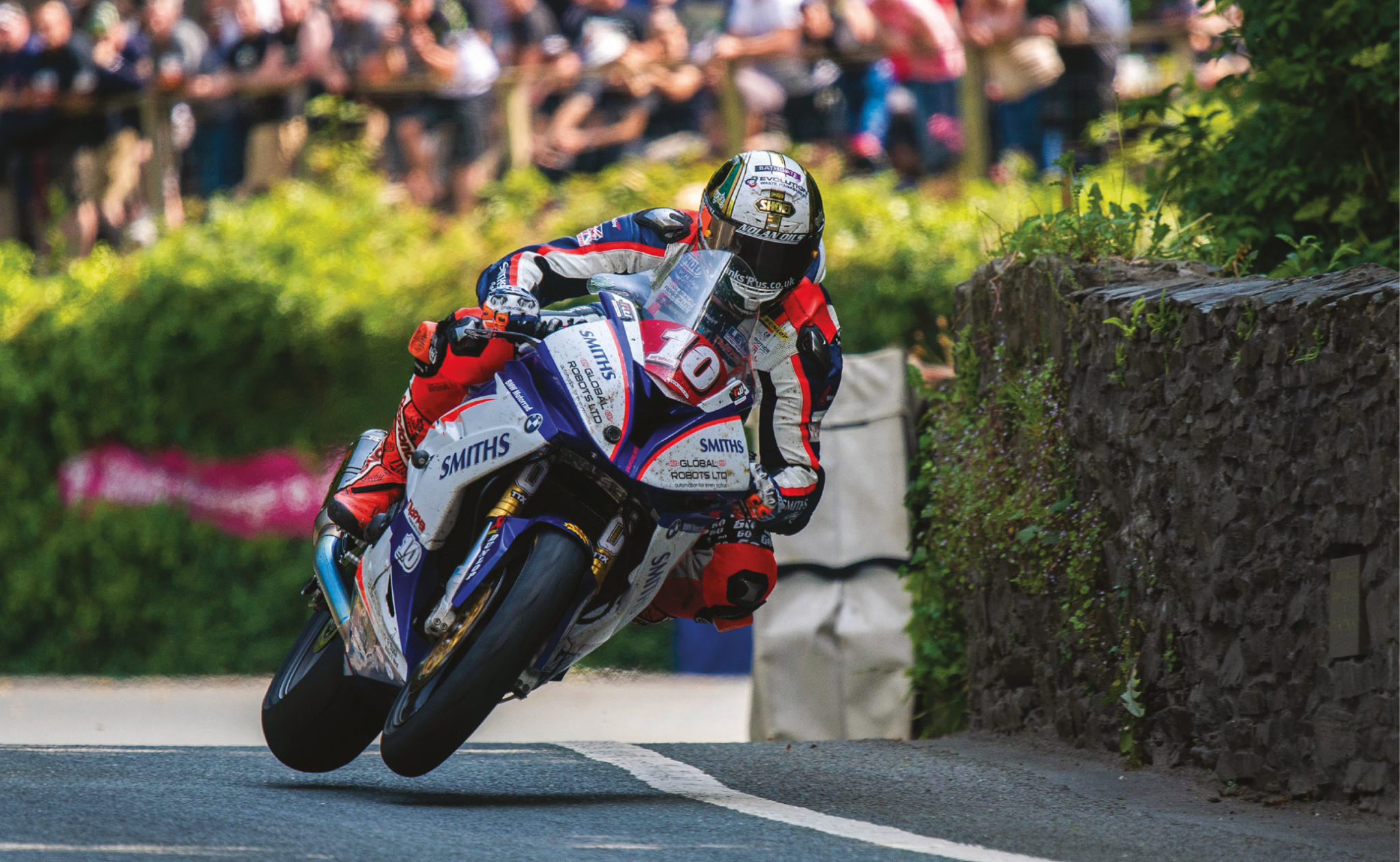
Inevitably, Hickman has had a few scares at the TT. He had perhaps his biggest moment during the 2016 Senior race, through the missile-fast section between the villages of Kirk Michael and Ballaugh. “You come out of Kirk Michael, you do the Rhencullen jump, then you drop down the hill, go right and left through Bishops Court and then there’s a flat-chat-in-sixth-gear right. That’s where I hit my shoulder on the grass bank on the inside. It nearly pulled me off the back of the bike, which wasn’t ideal.”
The year before he had a huge moment coming down the mountain while approaching the mega-fast 33rd, a double left-hander with no run-off, just a steep drop down the hillside. “That one was really odd. I was running downhill, flat-out in top gear and as I cut across the crest I lost the front. I probably lost it for 50 metres, then I caught it again, went down two gears and chucked it onto the corner. I think the wind had changed and caught me, because after the race I spoke to John McGuinness and he had had exactly the same thing on the last lap.”
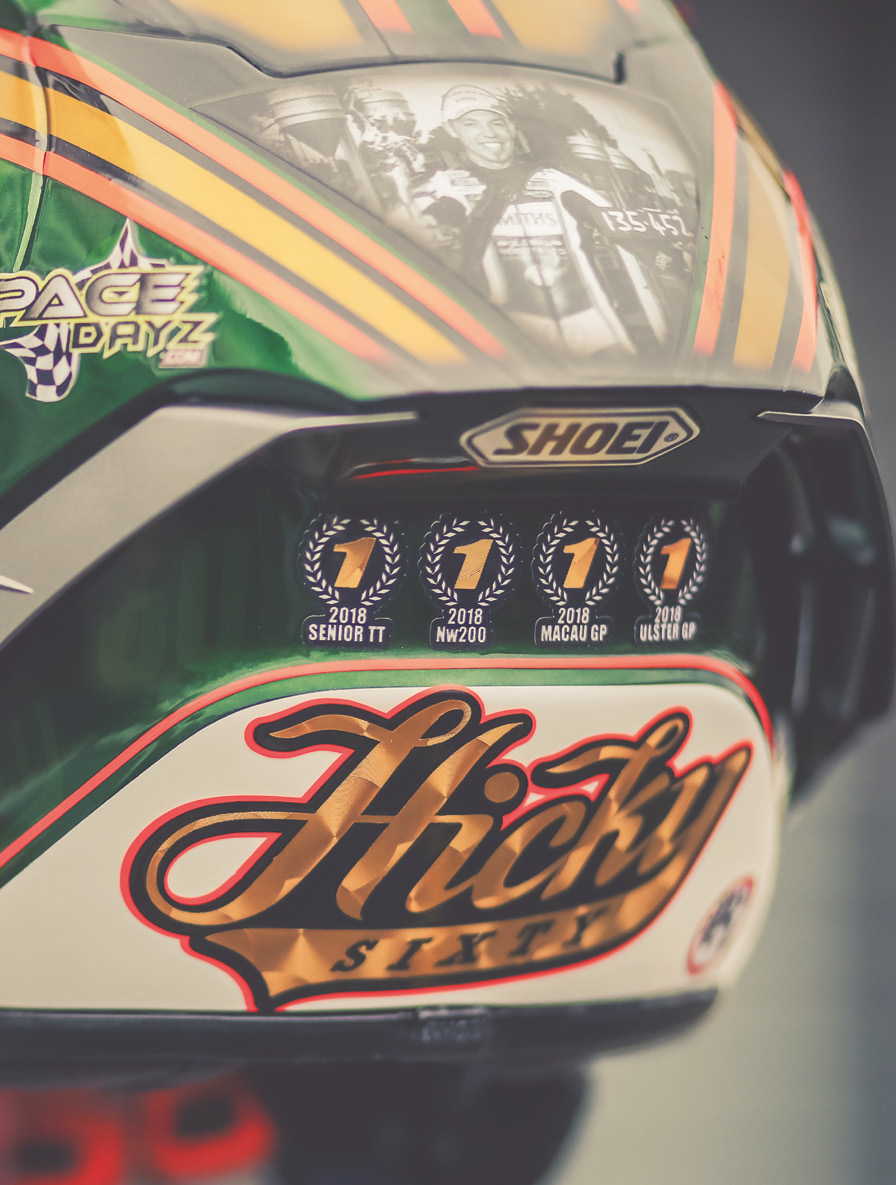
Losing control of the front tyre on a motorcycle is a very different matter to losing control of the rear. Most racers can save a rear-tyre slide, but when you lose the front you are usually in the lap of the gods; especially at 170mph.
Hickman doesn’t push the front tyre at the TT, but he does at short circuits and at Macau, where he’s won on three of his last four visits. “I use wheelspin to turn the bike just the same at Macau, plus I’m pushing the front tyre a lot harder, into pretty much every corner. Macau is more dangerous than the TT because it’s all Armco barrier, but we do a lot less miles, so the risk is less. It’s more of a short-circuit style there, which is why the short-circuit guys always dominate, not the road racers.”
Until 2014, Hickman was an up-and-coming short-circuit racer, with no plans to risk it all between the walls and hedges. “If you had asked me a few years before 2014 I would’ve said I wouldn’t do the TT. But I came to a point in my career where I was really struggling with BSB. I was a top-10 runner but unless I had a big cheque book I couldn’t get a good ride, so I wasn’t going to get anywhere because I don’t come from a wealthy background. I came to a crossroads in my career – either go back to work as a plasterer, or try something different in racing. I just wanted to keep riding bikes, because that’s what I love doing, so I thought that doing the TT and other road races like the North West 200 [in Northern Ireland] would allow me to keep riding.”
“Lose the front at 170mph and you’re in the lap of the gods”
BSB pays no start money or prize money, whereas there can be plenty of both at the TT, NW200, Macau and other street races.
“In 2013 I earned £12,000 from my BSB team, plus maybe another 10 from sponsors. I had £15,000 debt, even though I didn’t own anything – no car, no van, no bike, no house. So I stopped renting the house I was living in and started living in my motorhome, which I didn’t even own. I lived in there for three years. I’d turn up at a BSB round a week early and leave a week late, using the free electricity and water, then I’d turn up at the next round a week early and so on. That’s how I managed to get myself out of debt. Then I went to the TT in 2014, earned a bit of prize money and it snowballed from there. Last year my prize money from the TT alone was £32,000, plus bonuses from helmets, leathers and so on; so the turnaround has been massive.”
Conquering the Mountain course isn’t all about talent and bravery. It’s also about hard work and doing the knowledge.
“Last year was only my fifth year at the TT, and five years isn’t a long time at all. McGuinness started in 1999 and has done almost 60,000 miles there! I was fast straight away but I did a lot of homework. I watched lots of onboard videos and between January and April 2014 I made seven trips to the Island: always two days, hired a Ford Fiesta and drove round and round. So that was seven trips, five laps on the first day and five laps on the second day at an hour a lap, which makes 70 hours. I’m still the fastest newcomer – I did 129.1mph on a superstock [showroom spec] bike in the 2014 Senior.
“Learning the track isn’t always easy. That section from Kerrowmoar to Iron Gates is all about being on the gas, but a lot of it is blind, so you’re learning and you can’t see where you’re going, so you roll off and then you have a massive tank-slapper because you hit a bump you shouldn’t have hit, which then makes everything even worse. Once you’ve learned it, you go, ‘right, I need to do this flat-out and it’s better’. The thing is that you learn something new every lap, even after five years.”
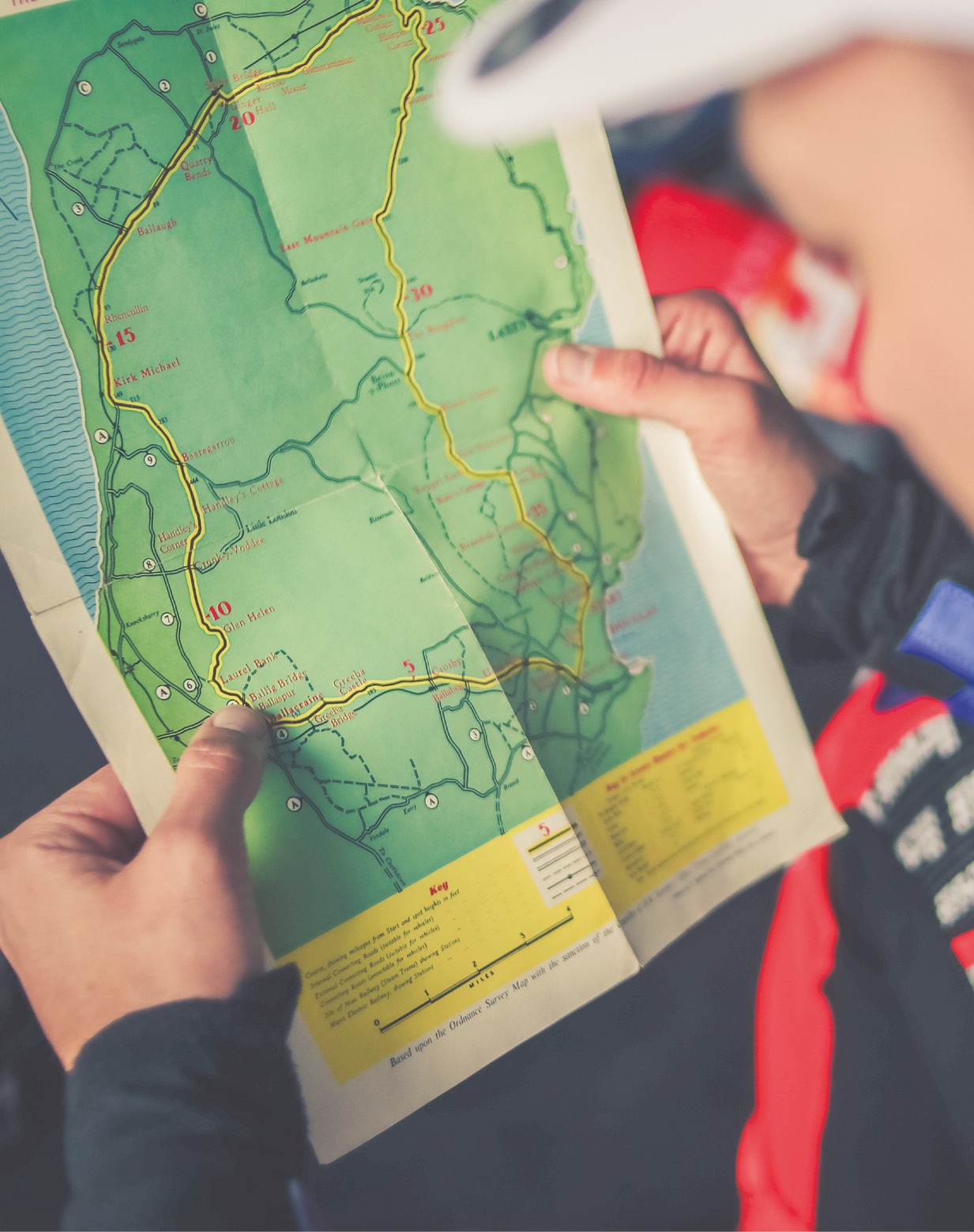
Despite his TT successes and the accompanying worldwide acclaim, Hickman still considers himself more of a short-circuit rider than a road racer.
“Everyone thinks the TT is my biggest thing, but it isn’t. I concentrate on BSB; I go road racing for fun [and no doubt for the fun that money can buy] and what will be will be. I think that’s a good way to approach it. For some road racers the TT is everything, so if they f**k up, their year is done. For me I’ve always got BSB.”
And despite the risks of the TT, Hickman still finds it easier than riding at Brands Hatch, Snetterton or Donington.
“A lot of road race fanatics don’t like to hear it, but for me the style of riding at the TT is easier than at BSB. Short-circuit racing is really hard, which is why most road racers don’t go well at BSB. You don’t attack corners so aggressively at the TT, but that’s where my short-circuit skills really help me, because I can attack some corners more aggressively than a lot of road racers. The difference is that I was a BSB rider before I was a TT rider, so it just comes naturally.
“I push 100 per cent at short circuits, and I push 100 per cent at the TT but it’s a different type of 100 per cent. I’m trying really hard, but it’s not the same. I take a step or two back from how I normally ride at BSB. Easy isn’t the right word but that’s how I feel – to me it’s just cruising.”
And that’s just his opinion!